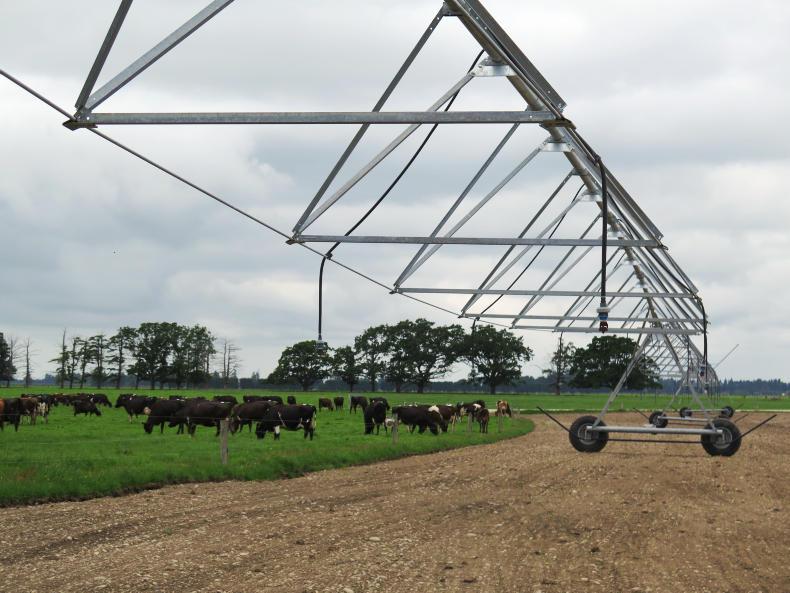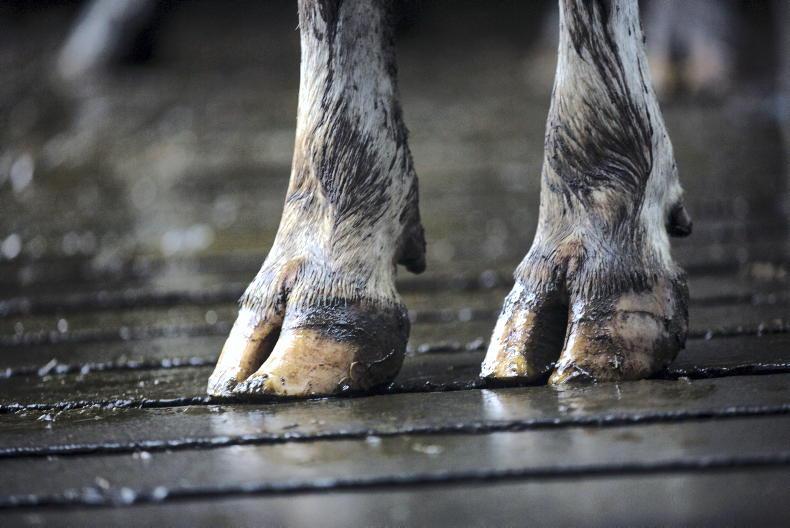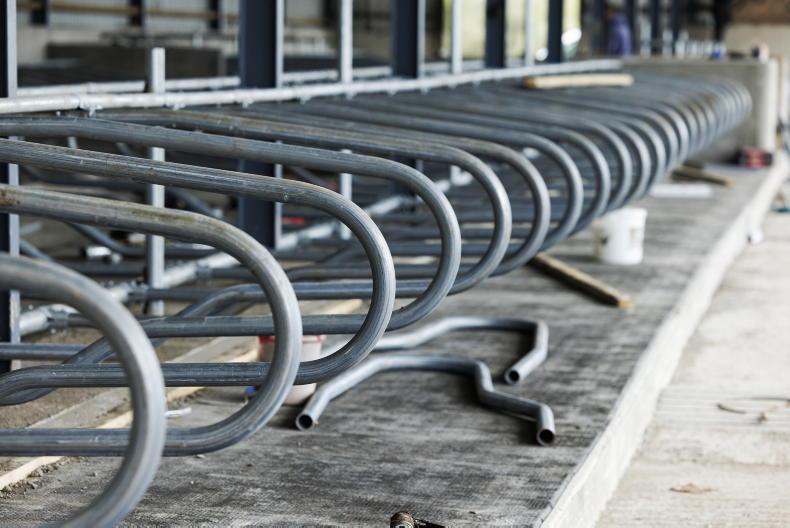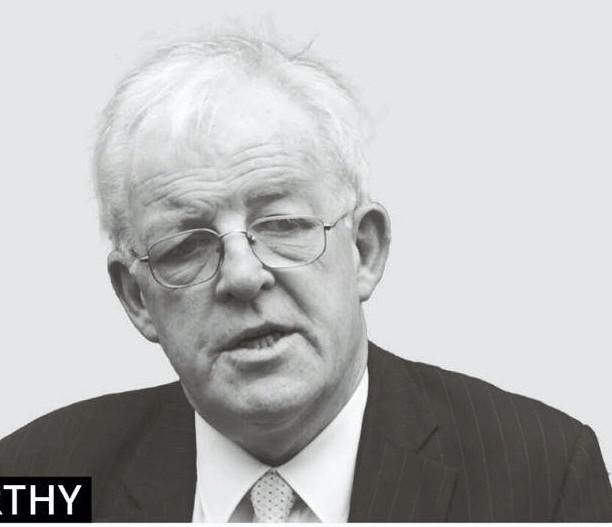People often ask me why we always look to New Zealand so much. Irish dairy farmers read about and look to New Zealand more than any other country in the world.
This is despite the fact that it is literally at the other end of the world and there are big differences in scale, soil type and climate.
But Ireland has more in common with New Zealand than any other country. Both our dairy industries are primarily block calving in spring and a very high proportion of our cows’ diet is grazed grass and around 90% of our dairy products are exported.
So even though we’re different, we have big similarities. From a market perspective, increases or decreases in supply from New Zealand has a massive effect on the price of milk in Ireland and around the world.
But the key lessons for me is when it comes to farming, New Zealand still trumps anywhere else as the land of opportunity. I think the best farmers in the world are in New Zealand.
The structure of farming there is designed to give opportunity to young people so that they can enter the industry and work their way up to farm ownership.
But farming in New Zealand is not without its challenges. Looking at the industry as a whole, it has lost a lot of its competitive edge it enjoyed for decades. It prided itself on being able to make a profit irrespective of milk price.
Rising costs of production and high debt levels are swallowing up free cash.
For generations, New Zealand farmers farmed the grass growth curve. Cows calved in spring and were dried off in autumn. The only supplement used was that grown on the farm, and usually hay or deferred grass at that.
Now, New Zealand farmers are more like European farmers. The general mind set among the majority is to farm the cow’s lactation curve as opposed to the grass growth curve.
This means more supplement is being fed to extend rotation length and lactation length in autumn. More supplement means that cows produce more milk. Average milk solids production per cow has increased by 50kg over the last 10 years to around 368kgMS/cow last season.
The extra supplement has increased costs with the average cost of producing a kilo of milk solids now at around $5/kgMS, whereas 20 years ago it probably cost around $3/kgMS. Increased supplement use is just one very visible example of cost creep.
Why do farmers knowingly increase costs to Irish standards? The promise of more milk to pay for the extra costs is probably the main reason. Some people say this is farming for production not profit.
Dairy NZ, the Teagasc equivalent, don’t have clear guidelines on what system farmers should be in. They classify systems on a scale of one to five depending on how much supplement is fed. They say each system can be profitable, which of course it can be.
Complicated system
The issue as I see it is that not everyone has the ability to manage a complicated system. So if the majority of farmers start practicing a complicated system, and by default achieve average, not top results then you need to ask the question is that the best system for the industry to go down?
Of course, more milk at the shoulders of the year is a good thing for milk processors, so feeding more supplement suits them. Fonterra, have largely been silent on the system change happening in New Zealand. Ironically, as farmers become less profitable there will be a bigger focus on milk price as more of their livelihoods depend on it.
Making sure their farmer members are inherently profitable would be a good strategy for Fonterra, and all other co-ops. The fact remains that more supplement has not created more profit for farmers.
Interest costs haven’t changed much in 20 years and are still hovering around the $1.20/kgMS mark. This hides a significant fact that interest rates have halved over the same period. So if interest rates have halved, and yet the cost of interest per kilo hasn’t changed, it means that debt levels per kilo of milk solids have doubled, which they have.
Have farmers been reckless borrowers or have banks been reckless lenders? Probably a bit of both. The regulatory environment in New Zealand is definitely more lax. You can get approval for a loan in New Zealand if EBIT, or net profit before interest is 1.2 times the interest charge while it would have to be 2.7 or three times the interest charge in Ireland.
Land values have increased and prime dairy land will make $60 to $80,000/hectare (€35 to €47,000/ha).
The land market is in stalemate at the moment. Most farmers can’t afford to repay debt as this was never factored into the budgets. The loan was taken out on the proviso that only the interest would have to be paid and when the farm would be sold in 10 or 20 years’ time the value of the land would have increased which would pay back the original debt and leave a nice tax free balance to the farmer.
Over 1,000 farms are for sale but they are not selling. Land values are said to have dropped by 18%, but very few farms have been sold.
Only the most profitable farmers can afford to buy land now, and it is only these farmers that will get financial backing from a bank as they have the ability to repay debt. However, these farmers aren’t going to buy land now because they are expecting land prices to fall.
Buying ban
The New Zealand government have banned foreign buyers from buying property in New Zealand. It was introduced to curb rising house prices in the cities, as there was evidence that Chinese investors were buying homes as investment properties.
The fallout of this is that Chinese buyers are no longer able to buy farmland like they once were. The government will be under pressure to relax these rules.
The environment is a big issue. For the first time, farmers are being constrained in how they farm. Farmers that leach a high amount of nitrogen will be fined. How much leaching is too much leaching is based on how much leaching the farmers in their area are doing. If in the top 25% for leaching, you will be forced to cut back. Different areas have different rules.
Another issue is male or surplus dairy calves. About 1.7 million calves a year are slaughtered at a young age. New rules around age, housing and how they can be loaded and unloaded have been introduced. However, the question remains will the consumer of tomorrow ever be satisfied with not only removing calves from their mothers, but slaughtering them at a young age.
It’s not that the calves don’t have a value. Blood and other parts of the body are highly sought after in the cosmetics and pharmaceutical industries. Finding a balance between what the consumer thinks is ethical and what is practical from a farming and environment perspective is going to be a challenge, and not just for New Zealand.
To summarise, Irish farmers need to be ahead of the curve when it comes to environmental protection, animal welfare and profitability. This holds true from a global perspective and from an individual farm perspective.
Ireland should aim to be the best dairy producer in the world. To achieve this, we will have to change the way we farm, but probably not by much as our pasture based system is a great place to start from. We will have to reduce our inputs of nitrogen and supplementary feed and will probably have to stop ploughing up permanent grassland.
I am more convinced than ever about the merits of low input permanent pasture with clover. By sticking with grass based systems, Ireland has nothing to fear from new environmental regulations, so long as the legislators follow the science.
Read more
Building a $70m dairy business
New Zealand: meet share-milker Mark Sing
People often ask me why we always look to New Zealand so much. Irish dairy farmers read about and look to New Zealand more than any other country in the world.
This is despite the fact that it is literally at the other end of the world and there are big differences in scale, soil type and climate.
But Ireland has more in common with New Zealand than any other country. Both our dairy industries are primarily block calving in spring and a very high proportion of our cows’ diet is grazed grass and around 90% of our dairy products are exported.
So even though we’re different, we have big similarities. From a market perspective, increases or decreases in supply from New Zealand has a massive effect on the price of milk in Ireland and around the world.
But the key lessons for me is when it comes to farming, New Zealand still trumps anywhere else as the land of opportunity. I think the best farmers in the world are in New Zealand.
The structure of farming there is designed to give opportunity to young people so that they can enter the industry and work their way up to farm ownership.
But farming in New Zealand is not without its challenges. Looking at the industry as a whole, it has lost a lot of its competitive edge it enjoyed for decades. It prided itself on being able to make a profit irrespective of milk price.
Rising costs of production and high debt levels are swallowing up free cash.
For generations, New Zealand farmers farmed the grass growth curve. Cows calved in spring and were dried off in autumn. The only supplement used was that grown on the farm, and usually hay or deferred grass at that.
Now, New Zealand farmers are more like European farmers. The general mind set among the majority is to farm the cow’s lactation curve as opposed to the grass growth curve.
This means more supplement is being fed to extend rotation length and lactation length in autumn. More supplement means that cows produce more milk. Average milk solids production per cow has increased by 50kg over the last 10 years to around 368kgMS/cow last season.
The extra supplement has increased costs with the average cost of producing a kilo of milk solids now at around $5/kgMS, whereas 20 years ago it probably cost around $3/kgMS. Increased supplement use is just one very visible example of cost creep.
Why do farmers knowingly increase costs to Irish standards? The promise of more milk to pay for the extra costs is probably the main reason. Some people say this is farming for production not profit.
Dairy NZ, the Teagasc equivalent, don’t have clear guidelines on what system farmers should be in. They classify systems on a scale of one to five depending on how much supplement is fed. They say each system can be profitable, which of course it can be.
Complicated system
The issue as I see it is that not everyone has the ability to manage a complicated system. So if the majority of farmers start practicing a complicated system, and by default achieve average, not top results then you need to ask the question is that the best system for the industry to go down?
Of course, more milk at the shoulders of the year is a good thing for milk processors, so feeding more supplement suits them. Fonterra, have largely been silent on the system change happening in New Zealand. Ironically, as farmers become less profitable there will be a bigger focus on milk price as more of their livelihoods depend on it.
Making sure their farmer members are inherently profitable would be a good strategy for Fonterra, and all other co-ops. The fact remains that more supplement has not created more profit for farmers.
Interest costs haven’t changed much in 20 years and are still hovering around the $1.20/kgMS mark. This hides a significant fact that interest rates have halved over the same period. So if interest rates have halved, and yet the cost of interest per kilo hasn’t changed, it means that debt levels per kilo of milk solids have doubled, which they have.
Have farmers been reckless borrowers or have banks been reckless lenders? Probably a bit of both. The regulatory environment in New Zealand is definitely more lax. You can get approval for a loan in New Zealand if EBIT, or net profit before interest is 1.2 times the interest charge while it would have to be 2.7 or three times the interest charge in Ireland.
Land values have increased and prime dairy land will make $60 to $80,000/hectare (€35 to €47,000/ha).
The land market is in stalemate at the moment. Most farmers can’t afford to repay debt as this was never factored into the budgets. The loan was taken out on the proviso that only the interest would have to be paid and when the farm would be sold in 10 or 20 years’ time the value of the land would have increased which would pay back the original debt and leave a nice tax free balance to the farmer.
Over 1,000 farms are for sale but they are not selling. Land values are said to have dropped by 18%, but very few farms have been sold.
Only the most profitable farmers can afford to buy land now, and it is only these farmers that will get financial backing from a bank as they have the ability to repay debt. However, these farmers aren’t going to buy land now because they are expecting land prices to fall.
Buying ban
The New Zealand government have banned foreign buyers from buying property in New Zealand. It was introduced to curb rising house prices in the cities, as there was evidence that Chinese investors were buying homes as investment properties.
The fallout of this is that Chinese buyers are no longer able to buy farmland like they once were. The government will be under pressure to relax these rules.
The environment is a big issue. For the first time, farmers are being constrained in how they farm. Farmers that leach a high amount of nitrogen will be fined. How much leaching is too much leaching is based on how much leaching the farmers in their area are doing. If in the top 25% for leaching, you will be forced to cut back. Different areas have different rules.
Another issue is male or surplus dairy calves. About 1.7 million calves a year are slaughtered at a young age. New rules around age, housing and how they can be loaded and unloaded have been introduced. However, the question remains will the consumer of tomorrow ever be satisfied with not only removing calves from their mothers, but slaughtering them at a young age.
It’s not that the calves don’t have a value. Blood and other parts of the body are highly sought after in the cosmetics and pharmaceutical industries. Finding a balance between what the consumer thinks is ethical and what is practical from a farming and environment perspective is going to be a challenge, and not just for New Zealand.
To summarise, Irish farmers need to be ahead of the curve when it comes to environmental protection, animal welfare and profitability. This holds true from a global perspective and from an individual farm perspective.
Ireland should aim to be the best dairy producer in the world. To achieve this, we will have to change the way we farm, but probably not by much as our pasture based system is a great place to start from. We will have to reduce our inputs of nitrogen and supplementary feed and will probably have to stop ploughing up permanent grassland.
I am more convinced than ever about the merits of low input permanent pasture with clover. By sticking with grass based systems, Ireland has nothing to fear from new environmental regulations, so long as the legislators follow the science.
Read more
Building a $70m dairy business
New Zealand: meet share-milker Mark Sing










SHARING OPTIONS